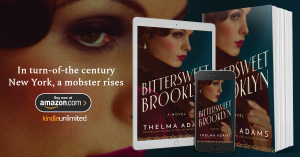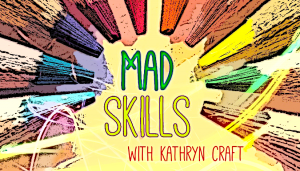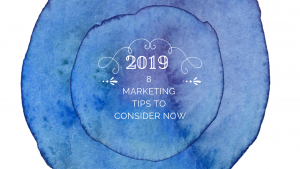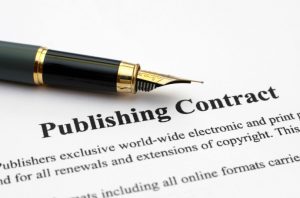Business
Photo by Pexels via Pixabay Free License
Recently my latest creative pursuit, a departure from my stalled work in progress, has started bumping against a writerly controversy about which I had previously been only vaguely aware, that of authors receiving sharp pushback on their characters and in some cases their entire story concept because of perceived cultural disrespect or disregard. And though my pursuit has to date been a personal one, I still found myself chafing under what at first seemed arbitrary and potentially insurmountable barriers. You see, my current exercises involve crafting scenes in which I seek to embody characters unlike myself, with life experiences far removed from my own. In doing so I imagine their worlds, borne of research and admittedly from instinct too, as with any fiction. On one level the exercise is simply a creative challenge. But it is has also become an emotional touchstone since my attempts to “walk a mile in their shoes” have reawakened my empathy in an increasingly isolating world. Makes for good stuff, huh?
You would think so, or at least I did. But my joy in this new pursuit has since tempered. You see, last week I stumbled upon a New York Times article about author Amélie Wen Zhao withdrawing her debut novel, Blood Heir, from publication following accusations of insensitivity and outright racism in her portrayal of a fantasy world in which characters born with special powers are enslaved. Though Zhao, a Chinese immigrant, has explained the inspiration for the novel stemmed in part from largely overlooked indentured servitude prevalent across Asia as well as her personal experience as an outsider, criticisms soon overtook the initial positive reception of advance readers, leading to her decision to withdraw the novel prior to its scheduled June release.
Not having an advance copy myself, I cannot assess the full veracity of the complaints. Yet the situation immediately struck me as unfair. After all, an author chose to forego a publishing dream pursued for most of her young life right at the cusp of its fruition. In the days since, I have devoured reports of other recent works withdrawn from publication, both before and after their market releases. And though I now have more insight into the issues at play, my feelings remain torn. So I turn to you, fellow Unboxers, to help unravel the decidedly thorny matter of the degree to which writers should shape their creations to meet the expectations – or demands? – of potential readers.
Read MoreFlickr Creative Commons: Noirathsi’s Eye
The Digital Millennium Copyright Act (“DMCA”) is a U.S. law designed to protect content creators (and Internet Service Providers), and to “maintain a balance between the rights of authors and the larger public interest.”
I could write a book (and people have) describing the DMCA in detail, but the part of the law most relevant to authors – and the topic of today’s post – is the DMCA Takedown Notice.
(Advance apologies for the length of this post, but it takes a little space to describe the process in a useful way.)
Under the DMCA, website hosts and ISPs must promptly investigate and resolve copyright infringement claims, provided the claims are presented in a DMCA-compliant notice (normally called a “DMCA Takedown Notice”). The legal requirements for this notice are established in 17 U.S. Code Section 512 (c)(3). In practical English:
To put an ISP on notice of copyright-infringing material on a hosted website, the person claiming infringement (or his/her representative) must send the ISP a written notice (many ISPs accept these notices in electronic format, and many websites post a DMCA submission form) containing the following information:
Before you send a DMCA notice to a website or ISP you should:
Be aware: a DMCA […]
Read MoreWe at Book Brush are super excited to let all of you know about a new marketing product for authors. Are you an author that has ever struggled with creating great images to use on social media or for ads you are running? I know this can be a daunting task. Book Brush has made this task easy! You can try out their limited plan for free and start making great looking images within minutes.
Here are some of the key benefits…….
Scroll to the bottom of the home page to sign up for the Limited (free) Plan → Book Brush
Here are a few sample images for you to check out….
P.S. For those of you that are scrolling quickly, here is the link again…… Book Brush
Read MoreWouldn’t it be great if writing a novel could be like playing team sport? How great would it be to have teammates jumping up and down on the sidelines cheering for you, or running to your side if you got hurt? For most novelists—especially first-time or unestablished writers—reality looks much different. Instead of a throng of cheering fans, we are lucky if we have a dog sitting at our feet while we write.
When I started working on my first novel, I craved the camaraderie of a team. I wanted a coach and drills and discipline. I needed someone to care when I finished that first draft or finally nailed that tricky scene. Someone other than my dogs, that is.
In my quest to find a writing community, I applied to the Novel Incubator program run by GrubStreet, a writer’s organization based in Boston. Every year the Novel Incubator chooses ten authors from a competitive applicant pool. Together with instructor Michelle Hoover, those ten writers spend a grueling year revising and polishing their books.
I feel incredibly grateful I was accepted into the program in 2017. I revised my full manuscript three times during my Incubator year, and I critiqued my nine classmates’ manuscripts three times each. That amounts to thirty manuscripts in a year, in addition to weekly craft lessons, outside readings, homework exercises, and essays. There were late nights, early mornings, and more than a few tears.
I learned how to pitch my book, write a query letter, and talk to agents (without hyperventilating.)
Then, just when I was starting to feel confident, we graduated from the Incubator and Michelle pushed us out of the nest. I was scared.
Part of my Incubator tuition included admission to The Muse and the Marketplace, a large writer’s conference hosted by GrubStreet every spring. The Incubator hosted meet ups at the Muse for Incubator graduates to connect with agents and editors.
I attended the Muse with my cohort of Incubator grads (the Inkies), sad to have completed the program, wondering how I would survive in the publishing world on my own. But I quickly realized that I was no longer alone.
My classmates were right there, jumping up and down cheering for me. I was no longer writing by myself with my dogs. I was part of that team I had always longed for.
I pitched my book at that conference (and did not hyperventilate.) When I signed with an agent I met at The Muse, the Inkies lifted me up on their shoulders and carried me around Boston Common for a victory lap. (Okay, I made that part up, but it felt that way.) And when I’ve stumbled over rejections, my classmates have been the first ones to help me back up.
When Desmond Hall, the first in my Incubator cohort to sign a book deal, announced he had a two-book contract earlier this year, I couldn’t have felt prouder. Des is part of my team. It was a win for all of us.
In addition to being supportive, these programs produce successful writers. I can’t speak to the publication rates of other programs, but the Des is the fourteenth Novel Incubator to sign a publishing contract.
I feel myself getting sentimental (possibly mushy) when I talk about the […]
Read MoreCambria, California
Welcome to the second installment of Author Up Close, the series that explores several authors’ paths to publishing. If you missed the first in the series, a Q&A with author Fiona Zedde, you can read it here.
There are probably as many articles about the perils of self-publishing as there are about the “fall” of traditional publishing. Most of these articles lack nuance and are more concerned with promoting a perceived “right” way to publish while disparaging the “wrong” way. In reality, choosing a publishing path is a very personal decision, and what’s right for one might not be right for others.
Today’s featured author, Linda Seed, obviously made the right choice for herself and her career when she decided to self-publish. Linda is a contemporary romance writer, a Writer Unboxed Conference alum, and a friend. We’re in a few online communities together, and over the years I’ve watched her career grow from an author who, in her words, “made enough to buy a coffee” to one who now makes a living from her books.
In a sea of self-published authors, Linda stands out because of her excellent writing, commitment to quality, and strong work ethic. And as you’ll see from our Q&A, those things probably had a hand in getting Barnes & Noble’s attention at just the right time in her career.
GW: What do you write and how many books have you published?
LS: I write small-town contemporary romance, with all of my books set on California’s Central Coast. I’ve published nine books so far.
GW: You’re doing what a lot of other authors wish they could be doing right now: making a full-time income from your writing. When you started writing, had this been your goal? If not, when and what changed that?
LS: Honestly, when I started, I didn’t expect to make any money at all. It was more of a bucket list thing—I wanted to have a published book out there. For me, the day I uploaded my first book onto Amazon, my goal was met. Anything else was just a bonus.
Things changed eleven months later, in September 2016. I had two more books out by then, and I had just made my first book free. I went onto Facebook one morning to find a bunch of notifications from friends congratulating me. I learned that Barnes & Noble had featured my first book as their Free Fridays pick. My book was all over their social media, on their website—it was crazy. That drove the sales of my other books, and overnight I was making ten times more money than I had been. That was when I thought, okay, I might be able to make this into a viable business. I still have no idea why they chose my book, but that was really a turning point for me.
Read MoreYour book is coming out soon and you want to mark its entry into the world. You don’t want it to just slide out unnoticed amongst the serried ranks of ‘New Releases’ in the bookshops. You want it properly launched. But your publisher isn’t keen to do a launch. Too much time and effort for too little return, they imply. Unless you’re a celebrity, or a highly publicized first-time author with a dedicated, free-spending, large family and friends network, book launches aren’t a big part of many publishers’ promotional strategy these days. But—surprise, surprise—we authors still love them! And so it’s become more and more common for authors to put together their own book launch.
But launches are not as easy as they might sound to someone who is new to the process—that time and effort cited by reluctant publishers as reasons not to have one are very real things. As a veteran of many launches—both those I’ve attended and those I organized for my own books as an author–I can vouch for that! I’ve also recently organized other people’s book launches as a small-press publisher–generally small publishers are warmer to the idea of book launches than big ones. So I’ve accumulated some knowledge of what can help to make your launch a hit and not a miss!
First of all, it’s about planning. Planning well ahead of time, months ahead of time. Ask yourself:
What kind of launch do I want? Big, small, straightforward, themed–that is, not just themed around your book, but with a certain look? You will not be surprised to learn that a big, themed launch is the most time-consuming and expensive to pull off. However, don’t let it stop you if that’s what you want. With our small press, we’ve run a couple of themed kids’ Christmas book launches with a cast of thousands. Well, not exactly thousands but you know what I mean. Readings, music, party gifts and prizes have worked really well, but have also been a large amount of work to get right, with many panicky pre-launch moments.
The smaller, more straightforward launch, where someone launches the book with a short speech, the author says a few words, then everyone toasts the book baby with the sparkling stuff before hopefully lining up to buy signed books whilst trying to graze on the last remaining nibbles, might not be as glamorous but they can still work really well, especially if this is your first book, you’re celebrating it locally amongst your family and friends, and everyone’s excited to see you in print. When you’ve had several books out, it’s better to space out your launches—don’t have one for each book, because people, even your nearest and dearest, get launch fatigue. And small, standard launches are much, much easier to get right, aren’t nearly as much work, and booksellers know exactly what to expect and don’t get jumpy about unusual activities happening too close to those neat shelves.
Read MoreThey will tell you that you’re not a real writer. They say that having another job you do for money makes you soft. Don’t you believe in yourself enough to suffer, to struggle, they ask? They pretend it’s a question, but to them, it’s not a question; they only accept one answer. If you care enough, you’ll dedicate yourself to The Art, they say, and anything less than that stark, all-in commitment marks you as a creative failure. If you get hungry enough–literally hungry, they say–then The Art you make will be superior and success will flow to you like water and all manner of things shall be well.
When they say this, they are wrong.
There are writers who rely solely on their writing, fiction or nonfiction, for income. There are writers with full-time jobs that have nothing to do with writing, and these writers fit in their creative pursuits early in the morning, late at night, on vacation days, whenever. There are stay-at-home parents whose primary work, unpaid though it may be, can be all-consuming, and they, too, write in the stolen moments, during naps, or after bedtime, or when one kid can be convinced to read a book to the other one, or on the bleachers at a soccer game. (Hockey game. Lacrosse game. Swim meet. Ballet lesson. You get the idea.)
They are all writers. If you write, you are a writer. That’s pretty much how the definition works.
And you are a working writer.
The type of work you do, writing-related or otherwise, does not make you more or less legitimate. Starving does not make you better. Or maybe it does–maybe you have thrown caution to the wind and dedicated yourself to full-time writing without a back-up plan and maybe the writing you’re producing now is pure gold, sheer magic, the best you’ve ever written–but if that isn’t the situation you find yourself in, don’t you dare think of yourself as less than. Don’t let anyone tell you that’s the only way to do things.
There are an infinite number of ways to do things. (And because you’re a writer, you can probably imagine somewhere between 15 and 83 of them off the top of your head. Good job, writer!)
Look, the internet is both the cause of and solution to all life’s problems, but don’t believe anyone on the internet who tells you what it takes to be a real writer. Yes, I acknowledge this is a ridiculous thing to say in an essay on the internet about what it means to be a particular type of writer. But note that I would never use the word “real” in this context. We’re writers, after all, aren’t we? Every word counts.
Read Morephoto adapted / Horia Varlan
Since it’s Valentine’s Day, I’m going to detour from my more typical craft posts to talk about the art of seduction.
Mm-hmm, that’s right: we’re going to talk submission packages.
I hear you, already moaning with anticipation and pleasure (although you’re ahead of yourself: this usually doesn’t come until the climax). Your attitude is on the right track. The only way to beg interest in your manuscript as it heads into the world is through a well-designed submission package. How will you wrap it—in the negativity with which so many approach the tasks of query letter and synopsis writing, or with the wily passion befitting your novel’s love letter to the world?
This post is not intended to help you craft these all-important documents. I’ll include links to other great WU posts for that. My aim is to help you love them, by showing how they work together to seduce a reader. (If you are seeking traditional publication, “reader” means an agent or small-press editor. If self-publishing, and using such material for back-cover copy, “reader” may be the end purchaser.)
Think these materials are too brief to fairly represent your project? Think string bikini. You might be surprised how revealing they can be. Let’s look at each aspect of the package in terms of its function.
Query: The Hook
The query is the bedrock of the submission package. This letter may be all an agent ever sees, since many request a query only. Rest assured that if written well, it is enough to earn an invitation to send additional pages. If you’ve ever bought a novel based on back-cover copy alone, you know this can work.
In just a few paragraphs, the query letter suggests whether you are ready to make the transition from writer to published author. Its opening is your pitch: one or two concise, enticing, cogent paragraphs meant to align us with your protagonist’s goal, hook us with its major complications, and suggest why any of this matters.
Note the italicized words.
Including word count proves you can produce within an acceptable target. Your bio will convey your understanding that writing careers are not plucked from thin air; they are built on platform.
Love the query, for the way it shows you are ready for this relationship.
Synopsis: Story Structure
The purpose of the synopsis is to assess […]
Read MoreWe are so excited to welcome our newest contributor to Writer Unboxed—-Ann-Marie Nieves! Ann-Marie is the founder of the highly respected company Get Red PR, with expertise in PR, advertising, marketing, copywriting, community relations, social media, and more! From her bio:
Ann-Marie is a communications generalist grounded in traditional media and proficient in accessing the power of social media. Within traditional outlets, she has garnered placements in media as diverse as: The Wall Street Journal, The New York Times, CNN, NPR, Fitness, Parade, Working Mother, Fox Business Network, Life & Style, InStyle, E!, New York Magazine and The Oprah Winfrey Show.
Welcome, Ann-Marie!
It’s my 20-something year in PR, my 10th in social media, and good ole lucky 13 as a tiny business owner. While I’m thoroughly enjoying the wisdom of my 40s, I can honestly say that each day at my desk, seated in my well-worn chair, feels brand new.
You’ve seen the substantial changes in the media world in 2018—several magazines will cease printing or reduce print schedules. (We’ll miss you Glamour!) You’ve experienced the seismic shifts in social media world. (I can follow #dogsofinstagram hashtag?!) While much has been written in the marketing communications sphere about highlights for 2019, here’s what I’d like my colleagues in words to pay attention to:
Read MorePhoto by Marcos Luiz Photograph on Unsplash
Though you may not know it by the prevalence of clickbait headlines sounding the death knell about author careers, successful authors are out there. Lots of them. And I’m not just talking about the ones who top the bestseller lists week after week. I’m talking about the authors whose names you may have never heard, who are quietly writing and earning income from their books.
And while there is no formula for becoming a successful author, or even a consensus about what defines “success,” there is much that can be learned from studying authors who are already where we hope to be one day. I’m fortunate to know several of these authors. I’ve had the benefit of their wisdom and expertise for years and wanted to share some of that wisdom with you. So this year, in my posts for Writer Unboxed, I’ll be sharing Q&A’s from authors I think we can all learn from.
My series, Author Up Close, will include Q&A’s with two of Writer Unboxed’s own: Anne O’ Brien Carelli, whose middle-grade novel was published by Little Bee in 2018; and Linda Seed, a contemporary romance author who had so much success self-publishing, she was able to leave her 9-5 to write full time. The series will also include interviews with Roger Johns, a traditionally published author who found himself in the enviable position of having to find an agent after being offered a publishing deal, and Vanessa Riley, a Ph.D. in mechanical engineering who writes multi-cultural Regency and historical romances in an industry that (falsely) believed there wouldn’t be a large enough audience for her work.
Author Up Close begins with a Q&A with Fiona Zedde. Fiona is the author of several novellas and novels including the Lambda Literary Award finalist Bliss. Her novel, Dangerous Pleasures, won the About.com Readers’ Choice Award for Best Lesbian Novel or Memoir of 2012. Fiona lives a location-independent lifestyle, traveling and sometimes living abroad for months at a time. As you’ll discover from our Q&A, her ability to adapt to changes in the industry has been key to her success as an author.
GW: You’re what the publishing industry considers a “hybrid author.” Was this an intentional strategy you adopted when you first launched your professional writing career or is this something that evolved?
Read MorePublishing contract
Recently, I presented a research paper at a publishing conference which was themed around the experience of negotiating, and signing, book contracts. The paper, based on a series of interviews with Australian-based authors, publishers and agents, looked at all kinds of questions around book contracts. One of the questions which aroused a lot of interest was the idea of the contract ‘red line’—when do you know, whatever side of the publishing table you’re on, that you need to walk away? I thought WU readers might be interested to read some of the things people said.
General comments:
All publishers and all creators are different, but they all need to be able to communicate clearly with each other. If a creator is uncomfortable with discussion at the contract stage, this is a good time to consider whether there is a good fit with the publisher (publisher).
The time to walk away is when an author or publisher comes to believe they won’t be able to sustain a positive relationship any longer, because if you can work together and communicate effectively then there may still be a way forward, regardless of the written contract (author).
I think you should walk away if you feel unduly pressured into making decisions that you are not comfortable with. Perhaps another publishing house may suit you (publisher).
If the publisher won’t negotiate on something important to you, don’t sign. Once you sign the contract you’re bound by it, no matter how unfair it is. Authors have more options than ever before to get published, so just walk away (author).
What about specific ‘red lines’? These ranged from:
Read More



















